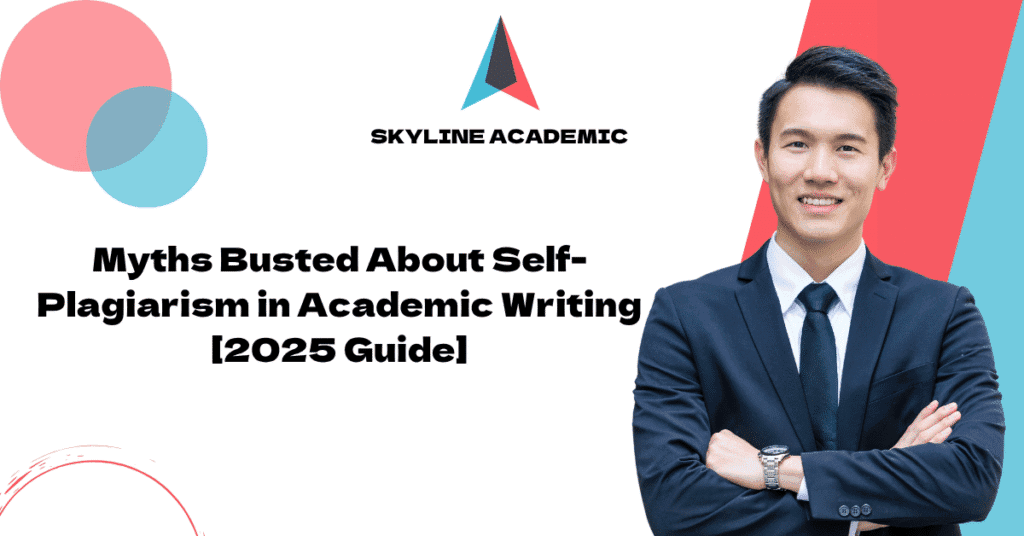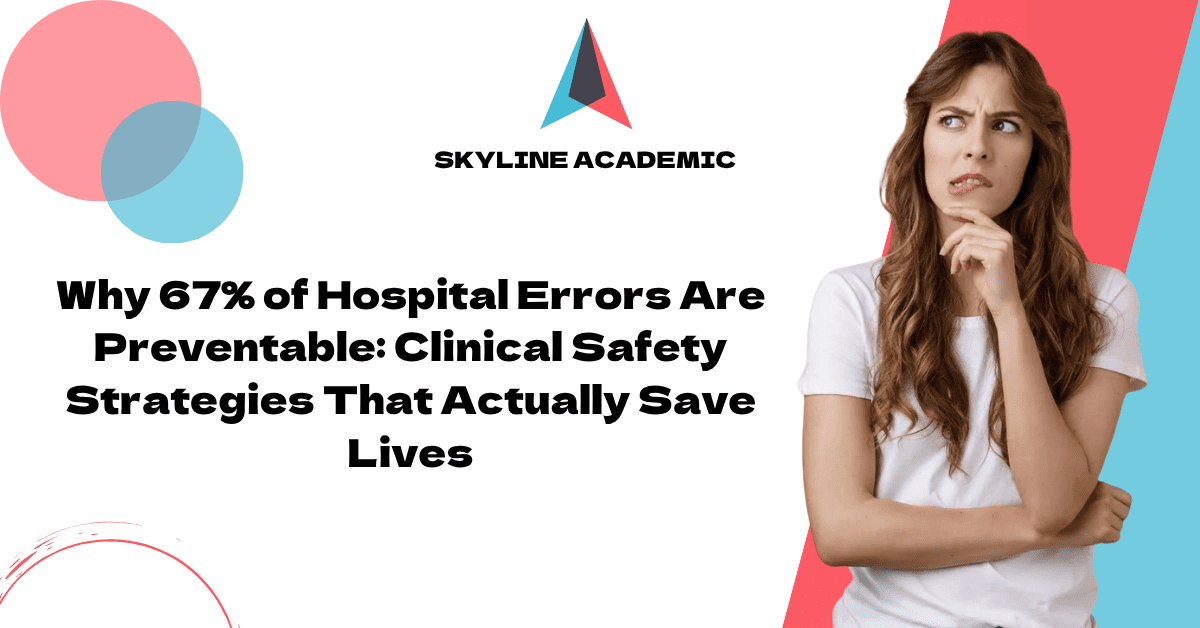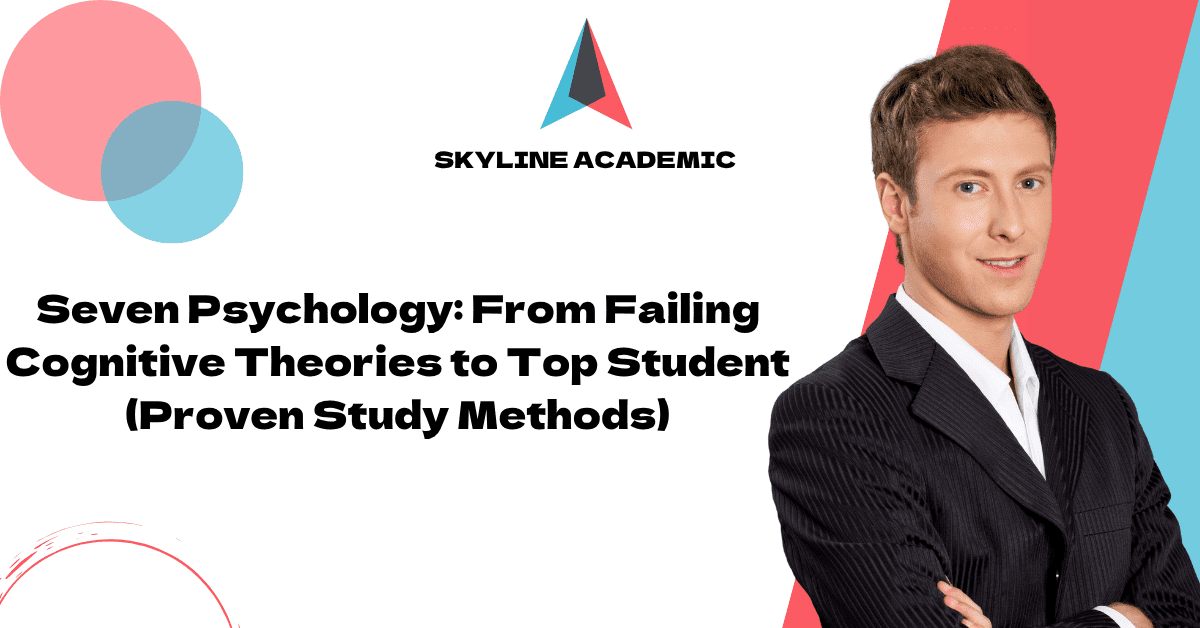Myths Busted About Self-Plagiarism in Academic Writing [2025 Guide]
Self-plagiarism stands as one of academia’s most misunderstood concepts. Students often believe they can reuse their previous work without proper citation, but this assumption leads to serious academic consequences. A common mistake students make is changing a few words in their existing papers and thinking that’s enough – it isn’t.
Text recycling, another name for self-plagiarism, happens when writers reuse their prior work without proper disclosure. Most universities strictly prohibit this practice through their academic integrity policies. Students who submit identical papers across different courses without permission break ethical guidelines. The University of Missouri’s rules clearly state that presenting old work as new without acknowledgment violates academic integrity.
The price of self-plagiarism can be steep. Students risk failed assignments and permanent damage to their academic reputation. AI plagiarism checkers and the right approach can help keep your work original. This piece shows you ways to create plagiarism-free content and direct you through academic integrity’s complex landscape with confidence.
Understanding the Basics of Self-Plagiarism
Students must look beyond recycling papers to learn about self-plagiarism’s definition, ethical implications, and real-life effects.
Self-plagiarism definition in academic writing
Self-plagiarism happens when writers recycle their previously submitted or published work without proper attribution. This academic offense, also known as “duplicate plagiarism” or “text recycling,” occurs when authors present existing work as completely new. Students commit self-plagiarism when they “reuse their own specific wording and ideas from work that they have previously submitted” [1] without acknowledging the original source.
Many students believe reusing old work just saves time, but this practice misrepresents their effort. Academic standards require each submission to show new learning and original thought, whatever the writer’s relationship to the original text. These integrity standards apply in any discipline, from undergraduate papers to published research.
Why it’s considered academic dishonesty
Self-plagiarism breaks academic integrity rules because it misrepresents the writer’s work originality. The French National Center for Scientific Research states that self-plagiarism breaks “ethic rules” since it fails to meet “the duty of only submitting original works” [2].
Content recycling leads to several issues:
- Misrepresentation of new work produced
- Failure to show current course learning
- Academic expectations violation for original contributions
- Reader deception about material novelty [3]
Academic communities expect assignments to showcase new knowledge and insights. “The goal of any academic work is to contribute a new perspective, analysis, or insight into a specific topic” [2]. Knowledge becomes stagnant without these fresh contributions.
Examples from student and professional contexts
Student self-plagiarism takes many forms. Linda’s case serves as a typical example – “a second-year English student” who reuses “sections of her previous work without informing her tutor” to save time [4]. Students who submit similar papers across multiple courses without instructor permission also violate academic integrity policies.
Researchers and professionals commit self-plagiarism by:
- Publishing entire papers with minimal changes
- Sending the same manuscript to multiple journals at once
- Using previous work portions without citation
- Creating multiple similar papers about identical research [5]
Modern plagiarism detection tools like Turnitin easily catch self-plagiarism. Students often feel “stunned to find that they have a higher similarity score when submitting to Turnitin, as it will match against a prior submission (their own)” [6]. These detection capabilities make hiding self-plagiarism nearly impossible in today’s academic environment.
7 Myths About Self-Plagiarism You Should Stop Believing
Students often have wrong ideas about self-plagiarism that could get them into serious academic trouble. These myths need to be cleared up right now.
1. It’s not plagiarism if it’s your own work
You might be the original author, but reusing your work without citing it properly is still plagiarism. As Hexam explains, “the essence of self-plagiarism is [that] the author attempts to deceive the reader” about the novelty of the material. Your published work in journals might also involve signed copyright agreements, which makes unauthorized reuse a potential legal issue.
2. Professors don’t care if you reuse content
In stark comparison to this, professors take self-plagiarism very seriously. They “are responsible for upholding academic standards and promoting ethical conduct.” Self-plagiarism detection can lead to lower grades, failed assignments, or even referral to academic integrity committees.
3. Rewriting a few sentences is enough
Rearranging words or tweaking sentences doesn’t create original work. Studies show students “superficially reword” instead of developing fresh content. Your assignments should demonstrate new thinking and intellectual growth.
4. It’s okay if the work wasn’t graded
Your unpublished or casually shared work needs proper citation too. The academic status of your previous work doesn’t give you a free pass from citation rules. Even your unpublished manuscripts need acknowledgment.
5. You can reuse work across institutions
Your academic record doesn’t reset just because you changed schools. Self-plagiarism rules apply to all educational institutions. Each assignment should represent original effort, whatever school you submit it to.
6. It’s fine if you cite yourself informally
Casual references like “as I mentioned before” don’t cut it in academia. Self-citation rules match the same standards as citing others’ work. Academic writing demands proper citation.
7. Plagiarism checkers can’t detect it
Don’t believe myth #7! Advanced plagiarism checkers like Skyline Academics’ tool catch self-plagiarism effectively. Try our plagiarism checker to check your work’s originality. Students are often “stunned to find that they have a higher similarity score” with plagiarism detection systems that store previous submissions and flag matching content.
Real-World Consequences of Self-Plagiarism
Understanding self-plagiarism theory must align with what it all means in practice. Let’s get into what happens after someone breaks academic integrity policies.
Academic penalties and failed assignments
Schools now enforce tougher penalties for self-plagiarism. Students caught the first time usually get a zero on the assignment or fail the course entirely [7]. A second offense leads to academic probation. The third strike could mean expulsion [8]. Some schools show no mercy and expel students right after their first offense [8]. Skyline Academic’s plagiarism detection tool helps students dodge these harsh penalties by spotting potential self-plagiarism problems before they submit.
Effect on your academic reputation
Self-plagiarism does more than trigger immediate penalties – it leaves lasting scars on your academic record. Your teachers and classmates lose faith in your work [9]. This loss of trust can limit your educational and career options down the road. These integrity violations stick to your permanent record and create a “stigma that seems never to fade completely” [10]. Your future work faces extra scrutiny as rebuilding trust becomes an uphill battle.
Legal and copyright issues in publishing
Publishers usually own the copyright after they publish your work [11]. This means you can’t freely reuse large chunks of your own writing. Self-plagiarism often breaks these copyright rules [10]. Publishers can take legal action against offenders, though this rarely happens [10]. Skyline Academic offers detailed resources that explain these tricky copyright rules.
Case studies from universities and journals
A student learned this lesson the hard way. Their final paper earned poor grades after a teaching assistant caught the self-plagiarism [12]. The student had copied from their old work without citations, thinking it was fine. Academic journals face similar challenges. A 2019 COPE study showed half of 656 surveyed editors dealt with self-plagiarism cases [13]. Research papers retracted for self-plagiarism see their citation rates drop 10-20% [13]. These numbers show how this ethical mistake hurts professional careers.
How to Stay Original and Avoid Self-Plagiarism
Academic integrity demands that you avoid self-plagiarism. These steps will help you keep your work original and ethical.
Ask for instructor approval before reusing work
Make sure you get clear permission from your instructor before you reuse any previous work. Columbia University Engineering makes it clear: “If you have two similar assignments, no matter how long it has been between the submissions, you are not allowed to submit the same work twice” [14]. Talk to your professor about what you want to reuse and explain your reasons.
Use AI plagiarism checkers to verify originality
Modern plagiarism detection tools can spot matching content before you submit. Skyline Academics’ plagiarism checker tool helps students who worry about self-plagiarism. The tool scans your work against previous submissions to check originality. Learn more about our plagiarism checker tool.
Regular online plagiarism checkers don’t work as well as institutional tools like Turnitin. These tools keep databases of submitted work and can spot self-plagiarism with over 99% accuracy [15].
Keep track of your submissions and citations
You should record every paper you write, especially those about similar topics. This helps you avoid accidental self-plagiarism. Create a personal database of your past work that includes titles, submission dates, and main arguments.
Use citation managers to organize your sources
Citation managers work as “an electronic filing cabinet” for your sources [16]. They create in-text citations and bibliographies automatically while you write. This helps ensure proper attribution, which becomes vital when you cite your previous work.
Develop new angles on familiar topics
Don’t recycle old ideas. Look at similar topics with fresh views. This means “reframing the ideas previously used to suit the new audience” [17]. Use your original research notes, add new insights, and create fresh content even with familiar subjects.
Conclusion
Final Thoughts on Avoiding Self-Plagiarism
Learning about self-plagiarism reveals one clear truth: reusing your work without proper attribution brings serious risks. Of course, myths about this form of academic dishonesty can mislead students. Now you know why each submission needs original work.
Your academic integrity needs proactive protection. Get your instructor’s permission before you reuse any previous material. On top of that, it helps to keep detailed records of your work, especially when you write about related topics in different courses.
A reliable plagiarism detection tool before submission proves essential. Skyline Academic’s plagiarism checker excels here because it matches your current work with previous submissions—something many standard checkers miss. This tool spots potential self-plagiarism before it becomes an academic violation that could derail your academic experience.
Academic integrity might feel daunting at times, but the stakes are too high to ignore. Students who disregard these standards face failed assignments, damaged reputations, and possible expulsion. Then, developing strategies to maintain originality ends up serving your long-term academic success.
Don’t see citation requirements as roadblocks. Call them safeguards that protect your academic credibility. You can show your ongoing intellectual growth through proper self-citation or fresh points of view on familiar topics.
Note that academic writing shows your growing knowledge and analytical skills. Your commitment to originality in each assignment helps you avoid penalties and maximize your education’s value.
FAQs
Q1. Can self-plagiarism result in expulsion from college? Yes, self-plagiarism can lead to severe consequences, including expulsion from college in extreme cases. Most institutions have strict academic integrity policies that treat self-plagiarism as a serious offense, potentially resulting in failed assignments, course failure, or even expulsion for repeated violations.
Q2. How much self-citation is acceptable in academic writing? Self-citation should be limited and used judiciously. While it may be necessary to reference your previous work in some cases, excessive self-citation is generally frowned upon. Always prioritize citing other credible sources and only cite your own work when it’s truly relevant and adds value to your current paper.
Q3. Can plagiarism detection tools identify self-plagiarism? Yes, modern plagiarism detection tools like Turnitin are capable of identifying self-plagiarism. These tools maintain databases of previously submitted work and can flag instances where you’ve reused your own content without proper attribution, even across different courses or institutions.
Q4. How can I avoid self-plagiarism when writing on a familiar topic? To avoid self-plagiarism, start by writing your new paper from scratch without referencing your previous work. Develop fresh perspectives, incorporate new research, and approach the topic from a different angle. If you must reference ideas from your previous work, be sure to cite them properly.
Q5. Is it acceptable to reuse my own work across different courses? Generally, it’s not acceptable to reuse your own work across different courses without explicit permission from your instructors. Each assignment is meant to demonstrate new learning and original thought. If you want to build on previous work, discuss it with your instructor and ensure you’re creating substantially new content.
References
[1] – https://www.latrobe.edu.au/mylatrobe/self-plagiarism-when-recycling-your-own-work-can-get-you-into-trouble/
[2] – https://www.compilatio.net/en/blog/beware-of-self-plagiarism
[3] – https://ori.hhs.gov/self-plagiarism
[4] – https://academicintegrity.unimelb.edu.au/plagiarism-and-collusion
[5] – https://www.scribbr.com/plagiarism/self-plagiarism/
[6] – https://www.turnitin.com/blog/what-is-self-plagiarism-and-what-does-it-have-to-do-with-academic-integrity
[7] – https://studentdefense.kjk.com/2024/09/04/understanding-self-plagiarism/
[8] – https://www.duffylawct.com/problem-self-plagiarism-college-courses/
[9] – https://www.kaltmanlaw.com/can-you-plagiarize-yourself-in-college
[10] – https://ir.law.fsu.edu/cgi/viewcontent.cgi?article=2645&context=lr
[11] – https://ori.hhs.gov/copyright-infringement-fair-use-and-plagiarism
[12] – https://www.queensu.ca/academicintegrity/case-studies
[13] – https://www.turnitin.com/blog/what-is-the-impact-of-self-plagiarism-for-researchers
[14] – https://www.engineering.columbia.edu/academics/academic-resources/academic-policies/citations-and-plagiarism
[15] – https://copyleaks.com/plagiarism-checker
[16] – https://guides.lib.umich.edu/c.php?g=1209331&p=9041011
[17] – https://paperperhour.com/5-ways-to-avoid-self-plagiarism



